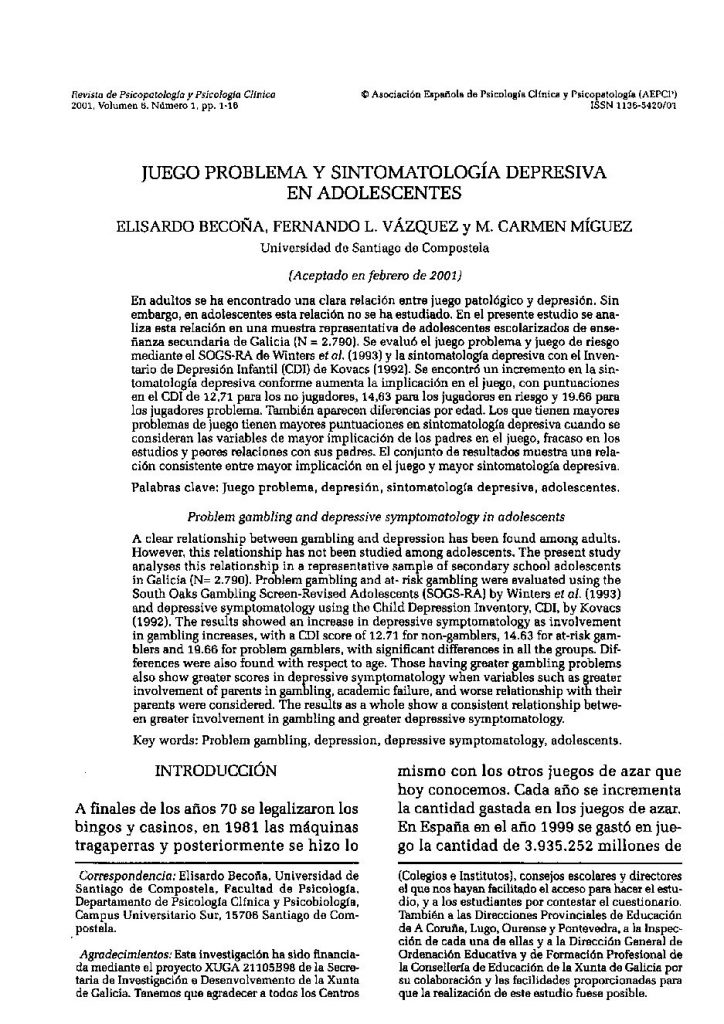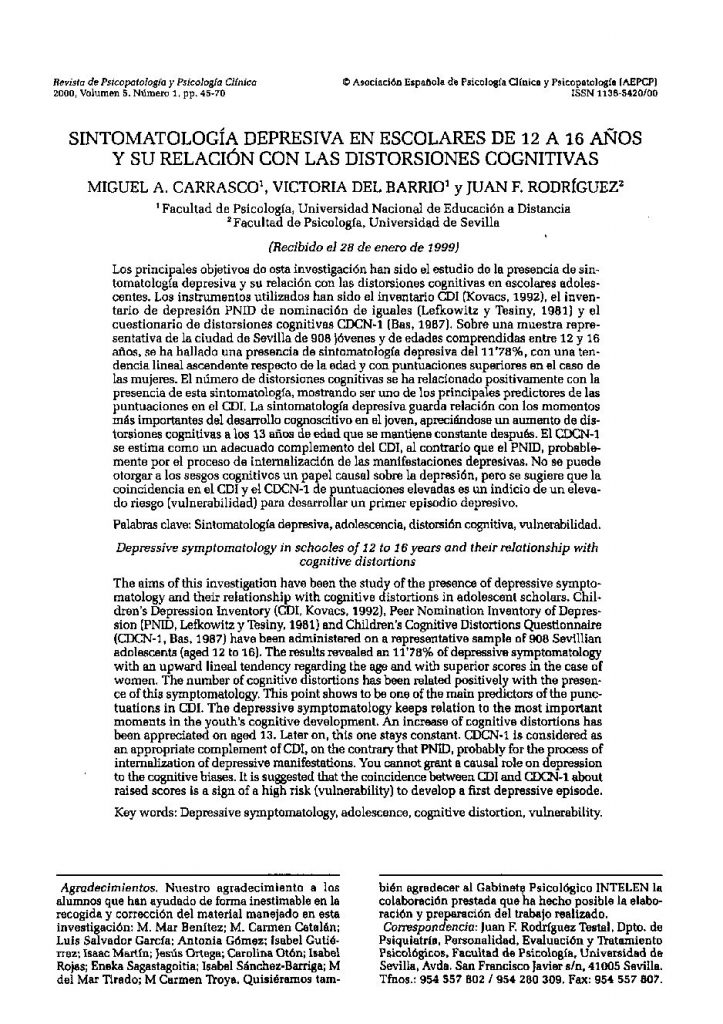Juego problema y sintomatología depresiva en adolescentes.

- Juego problema y sintomatología depresiva en adolescentes.
- Predictores psicológicos y sociodemográficos de la ansiedad anticipatoria ante la participación en “segundas pruebas” de detección de cáncer de mama.
- La depresión postparto: un estudio exploratorio con una muestra de mujeres valencianas.
- La experiencia de sufrimiento en los trastornos alimentarios: hacia un modelo integrativo.
- Thomas Joiner y James C. Coyne (Eds.) (1999): The interactional nature of depression. Washington, DC: American Psychological Association.
A clear relationship between gambling and depression has been found among adults. However, this relationship has not been studied among adolescents. The present study analyses this relationship in a representative sample of secondary school adolescents in Galicia (N= 2.790). Problem gambling and at- risk gambling were evaluated using the South Oaks Gambling Screen-Revised Adolescents (SOGS-RA) by Winters et al. (1993) and depressive symptomatology using the Child Depression Inventory, CDI, by Kovacs (1992). The results showed an increase in depressive symptomatology as involvement in gambling increases, with a CDI score of 12.71 for non-gamblers, 14.63 for at-risk gamblers and 19.66 for problem gamblers, with significant differences in all the groups. Differences were also found with respect to age. Those having greater gambling problems also show greater scores in depressive symptomatology when variables such as greater involvement of parents in gambling, academic failure, and worse relationship with their parents were considered. The results as a whole show a consistent relationship between greater involvement in gambling and greater depressive symptomatology.
En adultos se ha encontrado una clara relación entre juego patológico y depresión. Sin embargo, en adolescentes esta relación no se ha estudiado. En el presente estudio se analiza esta relación en una muestra representativa de adolescentes escolarizados de enseñanza secundaria de Galicia (N = 2.790). Se evaluó el juego problema y juego de riesgo mediante el SOGS-RA de Winters et al. (1993) y la sintomatología depresiva con el Inventario de Depresión Infantil (CDI) de Kovacs (1992). Se encontró un incremento en la sintomatología depresiva conforme aumenta la implicación en el juego, con puntuaciones en el CDI de 12.71 para los no jugadores, 14.63 para los jugadores en riesgo y 19.66 para los jugadores problema. También aparecen diferencias por edad. Los que tienen mayores problemas de juego tienen mayores puntuaciones en sintomatología depresiva cuando se consideran las variables de mayor implicación de los padres en el juego, fracaso en los estudios y peores relaciones con sus padres. El conjunto de resultados muestra una relación consistente entre mayor implicación en el juego y mayor sintomatología depresiva.




